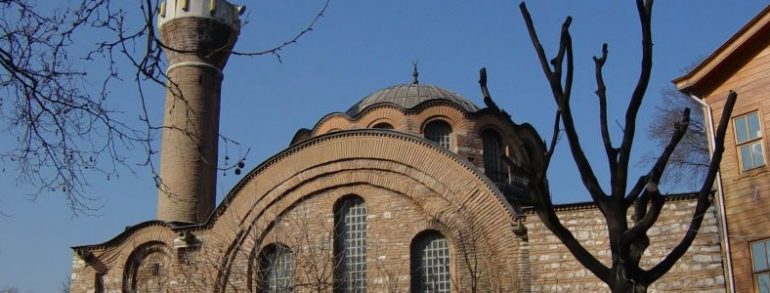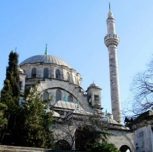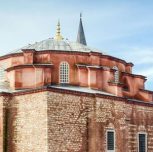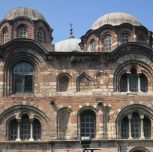Kalenderhane Mosque is a church converted into a mosque by the Ottomans. It is located near the Girls’ Dormitory in Vezneciler on 16th March Martyrs Street in the Vezneciler District of Eminönü county. It isn’t exactly known when the church was built, but it is assumed to have been built between the 9th and 12th centuries.
After the conquest of Constantinople in 1453, the church was assigned by Mehmed II personally to the Kalenderi sect of the Derwishes. The Dervishes used it as a zaviye and imaret (public kitchen), and the building has been known ever since as Kalenderhane (Turkish: "The house of the Kalenderi"). Before it was converted into a mosque by Maktul Beşir Ağa (the chief officer of the Ottoman Palace), it was originally used as monastery and later as church. In chronological order, it was first converted from the Palace Bath House into the Comnenian church, and was later used as a zawiya (zaviye) after the conquest, after which it was converted into a little mosque. It was ruined toward the collapse of the Ottoman Empire, and its minaret collapsed in 1930. Additionally, the Istanbul Technical University carried out joint studies and restoration work with Harvard University on the building between the years 1966-1975. Restoration finished in 1968, and the mosque opened once again for worship in the same year.
It has come into the center of the Kalenderhane Mosque from the narthex covered with vaults. The center of the primary structure is covered by a pendant dome. The central dome of the mosque is supported by a barrel vault, so the ceiling structure is visible. The walls of the mosque consist of both bricks and stones. The inner walls are decorated with beautiful colored marble panels and reliefs. It is now open for worship and to domestic and foreign visitors.










